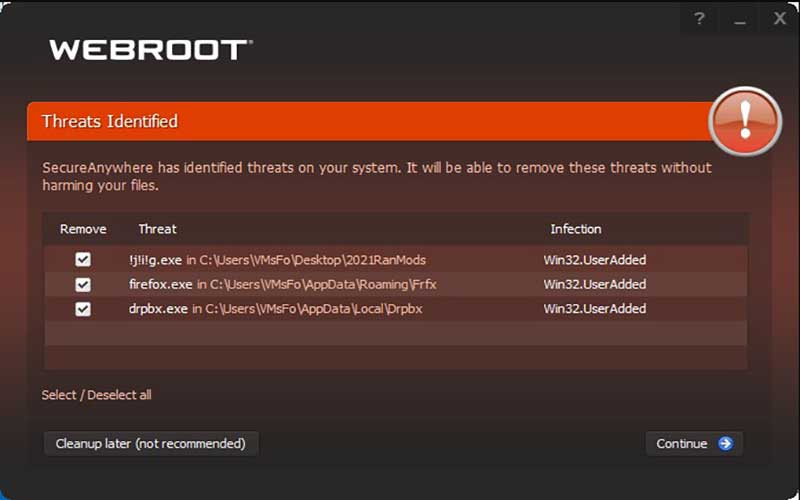
On both fronts, that was the poorest showing of our test group the majority of the 2012 suites we evaluated were able to detect and disable all active malware infections on our test system. More worrisome was its inability to clean up malware that has already infected a PC: Webroot’s package detected 60 percent of active malware infections, and managed to render just half of the infections inert. Although that is quite low percentage-wise, it was the poorest false-positive showing of the suites we looked at this year. In a couple of areas, however, the Webroot suite struggled: For instance, it mistook 11 known safe files (out of a pool of over 250,000) as being potentially malicious. It also detected 99.49 percent of known malware samples–that’s a better-than-average outcome, though a little short of the best performers, some of which detected over 99.99 percent of samples. That result pegs it right around average in this year’s tightly bunched field. Webroot’s new offering is effective at stopping brand-new malware, as it blocked 96.2 percent of attacks in our real-world malware detection tests.


The package is fast, and it’s good at catching malware before the invader reaches your PC, but a higher-than-average false-positive rate and disappointing system-cleanup results keep it from ranking any higher. SecureAnywhere represents a complete overhaul of Webroot’s product line, with a brand-new interface and new internals to go along with it. Although Webroot Secure Anywhere Essentials 2012 ($60 for one year, three PCs as of January 29, 2012) finished toward the back of the highly competitive pack in our 2012 roundup of security suites, Webroot’s newest offering shows lots of promise.


 0 kommentar(er)
0 kommentar(er)
